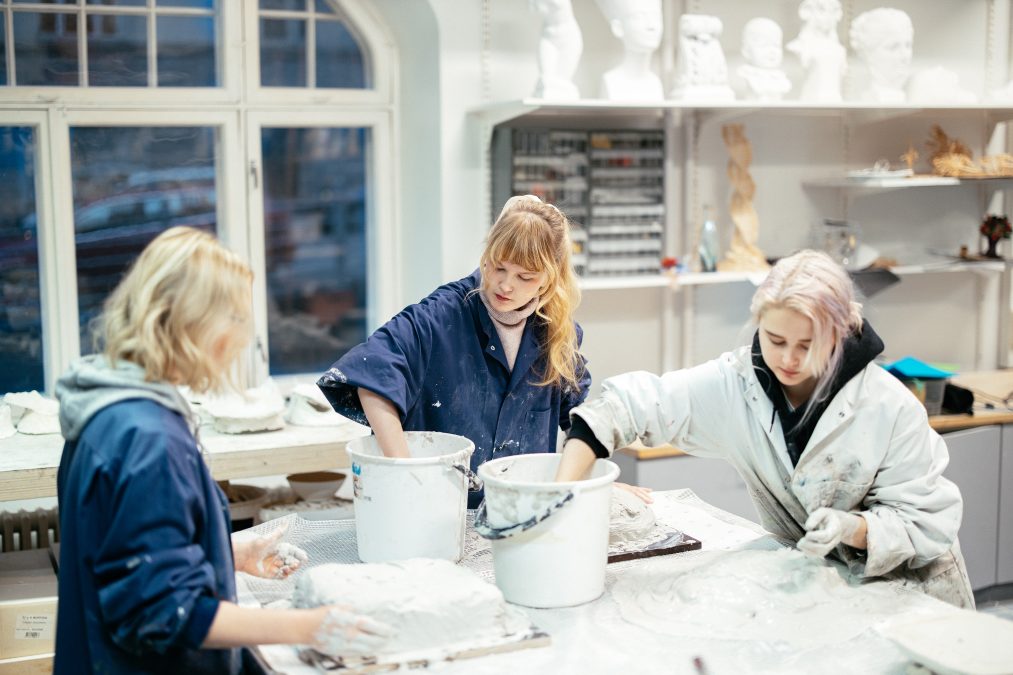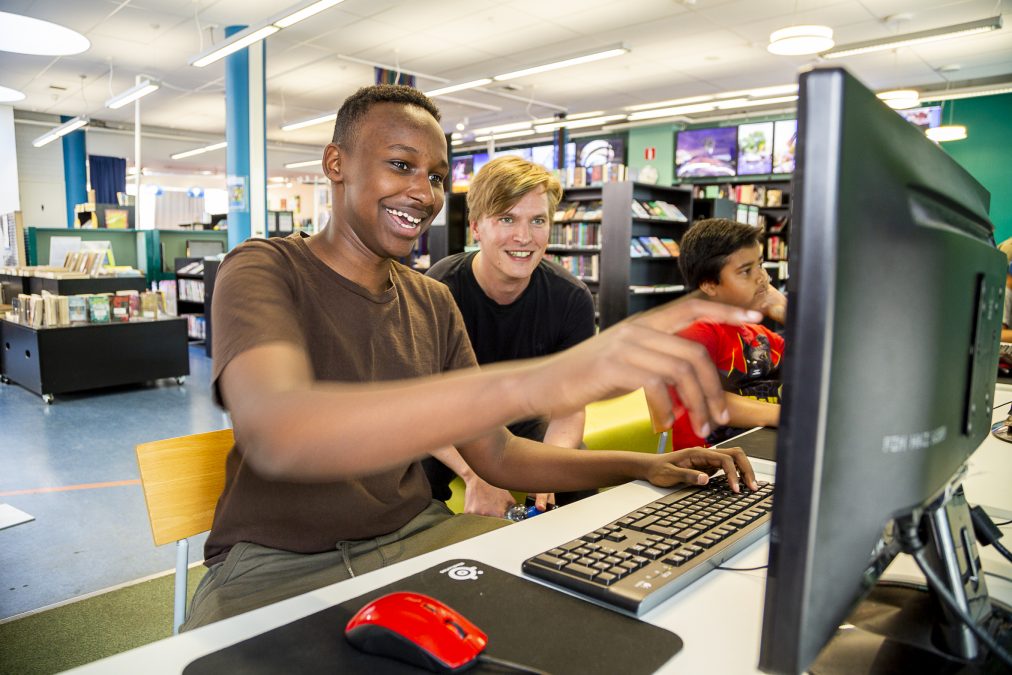Schools for teens in Helsinki

Are there high schools in Helsinki?
Finland doesn’t have high schools per se. The two options that are available, general upper secondary schools or vocational education and training are substantially different, as the diagram below explains.
Upper secondary education (age 16-19)
Before young people in Finland finish their last year of basic education (in most cases, the year they turn 16), they choose to continue their studies in one of two study tracks . The two schools for teens in Helsinki are general upper secondary school (lukio) or vocational school and training (ammattikoulu or, more familiarly, amis). School guidance counsellors help teens choose the path that suits them best.
Lukio, Finland’s own brand of prep high school
Finnish lukio is roughly equivalent to lycée in France. It cannot be directly compared to a US high school or UK grammar school.
Lukio prepares students for higher education studies. The course load is therefore rigorous. After a maximum of four years of study, lukio students sit for the matriculation examination. Performance on these tests is critical for university admission. At present, students can only take the matriculation examination in Finnish or Swedish.
In addition to the general curriculum schools, Helsinki has several lukio that follow a specialised curriculum or a have special emphasis. You can browse all of the city’s lukio with our school finder.
Amis, or Finnish vocational education
Ammattikoulu, colloquially known as amis, is Finland’s name for vocational education and training, or trade school.
In amis students study towards three different levels of vocational qualification. These qualifications are based on competence in a chosen field, and are shown in demonstrations of practical work. Vocational schools have now expanded their selection of training options from the more traditional fields of health, technology and service industry positions to include subjects like IT, entrepreneurship and the natural sciences.
It is also possible to study towards both a lukio certificate and amis qualification at the same time, in a combined study programme known as a vocational general upper secondary school
Vocational training opportunities in English are expanding, and there are several on-the-job training programmes that provide Finnish language support for newcomers to the country.

Which study track should I choose?
Studyinfo is a great source of information on different lukio and amis options in Finland. You can even submit applications, if you can sign into the site with a form of strong identification.
Cost and transport
In Finland, compulsory education continues until the year students turn 18. This means that all materials and equipment in schools for teens in Helsinki are paid for by the state. Travel costs for school journeys that are longer than seven kilometres are also covered.
It is not unusual for Helsinki teens to attend a lukio or amis further away from their home. This is especially true if they wish to attend an amis programme in a particular vocational field or a lukio with a special emphasis.
Young people of all ages are encouraged to walk or bike to school in Finland. Studies have shown that it increases school performance and general wellbeing – not to mention that it saves the planet! If this is not possible, the metropolitan area’s reliable public transport makes the commute easy. This, combined with the fact that driving licenses are issued at the age of 17 at the earliest, means that few young people drive to school.

Curriculum
All lukios in Finland follow the core curriculum for general upper secondary schools. Young people in lukio and amis are expected to be very independent and manage their own class selections, school schedules and study responsibilities. Daily instruction schedules vary.
In the past, students who chose to study at lukio did so with the intention of continuing their studies at a university. Likewise, students that elected to attend amis went on to study towards a profession or qualification at a university of applied sciences. Finland has now made the system more flexible, so young people can change direction if they wish. If they qualify, they can now apply for admission to any higher education institution, no matter what their education background. It is even possible to combine the two paths and earn a double degree.
Once graduates finish lukio or amis in Finland, they can apply to study in a university (yliopisto) or a university of applied sciences with a vocational emphasis (ammattikorkeakoulu). Both institutions are very selective. See our Universities and adult education page for more information.
IB schools
A few schools in the metropolitan area offer English-language IB programmes. The International Baccalaureate Diploma programme is demanding and differs in many respects from the Finnish national curriculum. In Finland, the programme consists of one preparatory year (grade 10), followed by a two-year course of IB study (grades 11-12).
Private schools in Helsinki
There are about two dozen private schools for teens in Helsinki. Some serve a certain language group, such as the Deutsche Schule, the Finnish-French School and the Finnish-Russian School. There are also several international schools, such as the International School of Helsinki and the European School of Helsinki. Please note that private schools in Helsinki charge tuition.